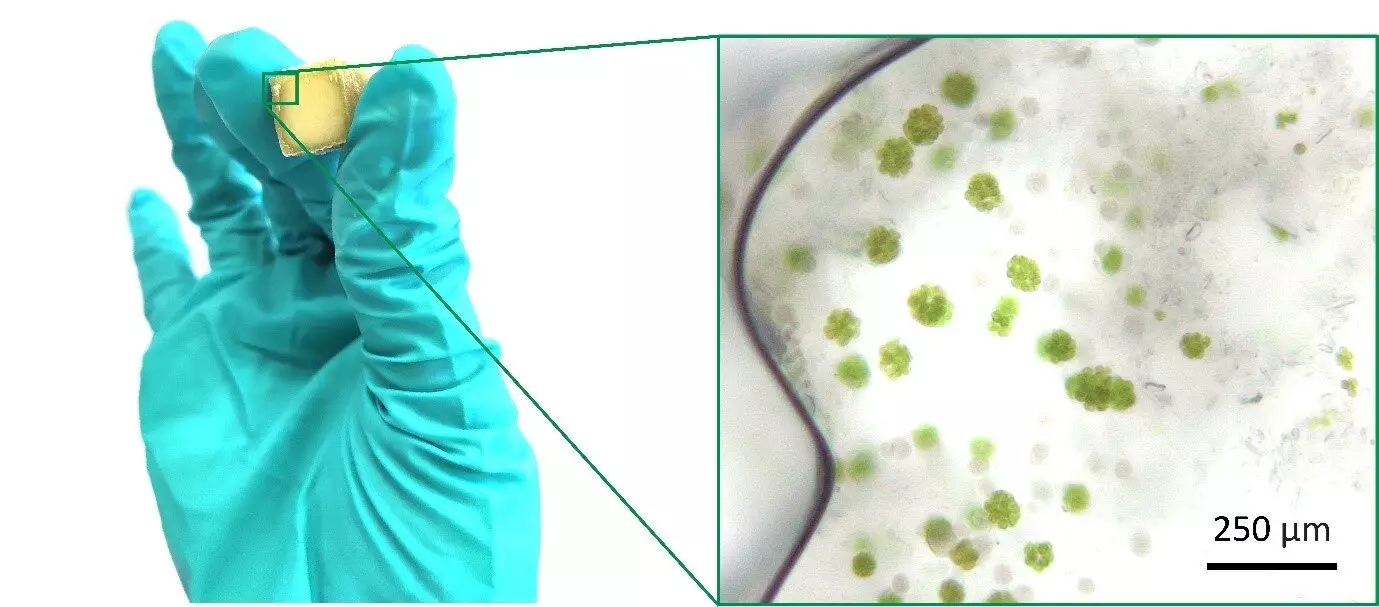Scientists from TU Delft have discovered the optimal conditions for the growth of microalgal cells in photosynthetic engineered living materials. These materials, which utilize light energy to convert CO2 into sugars, energy, and oxygen, have the potential to be used in various applications such as CO2 capture and as a source of oxygen for biological tissues. The team, led by Marie-Eve Aubin-Tam and Kunal Masania, has presented their groundbreaking findings in Advanced Materials.
Engineered living materials (ELMs) are a promising new class of materials that hold the power to revolutionize society. One particular type of ELMs is photosynthetic living materials, where organisms actively photosynthesize. In nature, many bacteria, algae, and plants perform photosynthesis as a means of survival. The researchers focused on ELMs with photosynthesizing algae, which could potentially provide oxygen to biological or engineered tissues, where oxygen supply is often insufficient for growth.
Despite the immense potential of photosynthetic living materials, their widespread use is limited by a lack of knowledge regarding how to control the growth of cells within these materials. To address this limitation, the researchers investigated the effects of material shape, light exposure, and access to nutrients and CO2 on cell growth. They discovered that cells primarily grew along the edges of the material, where they had better access to air and light. This observation was analogous to the structure of a plant leaf, which possesses a thin structure with a large surface area to maximize sunlight exposure.
The researchers found that a thin structure with a large surface area significantly increased the efficiency of photosynthetic living materials. In such structures, a substantial proportion of cells were located along the edges, allowing for enhanced air and light exposure. Mimicking nature’s design, leaves also have a thin structure with a large surface area to optimize sunlight absorption. The researchers emphasized the importance of accessibility to light and CO2 for cell growth. Introducing small openings for gas exchange improved cell growth in the inner layers of the material; however, it also accelerated dehydration, which proved detrimental to cell viability.
Nature once again served as inspiration, as leaves possess small openings called stomata for efficient gas exchange without excessive water loss. The researchers proposed the development of mechanisms that respond to CO2 shortage, similar to stomata, to enhance the longevity and efficiency of photosynthetic living materials in the future.
As part of their research, the team explored different material shapes and their influence on cell growth. To facilitate this investigation, they needed to develop a new ink composition that could be used for 3D printing larger and more complex objects. While the group at the faculty of Applied Sciences studied cell growth, Masania from the faculty of Aerospace Engineering contributed to the development of a new 3D printable ink. Working alongside Elvin Karana from the faculty of Industrial Design Engineering, they aimed to produce 3D structures of living photosynthetic materials for future applications.
The study conducted by the scientists from TU Delft sheds light on the optimal conditions for the growth of microalgal cells in photosynthetic engineered living materials. The research has significant implications for the development of new materials that can contribute to biological tissues, such as providing oxygen to engineered organs. The study highlights the importance of material shape, light exposure, and access to nutrients and CO2 for cell growth. By mimicking nature’s design and introducing small openings for gas exchange, researchers can enhance the efficiency and longevity of photosynthetic living materials. Additionally, advancements in ink composition and 3D printing techniques bring us one step closer to realizing the potential of algae-based living materials in various applications. The study of cell growth within ELMs will continue to play a crucial role in optimizing their functionality and efficient use in the future.


Leave a Reply